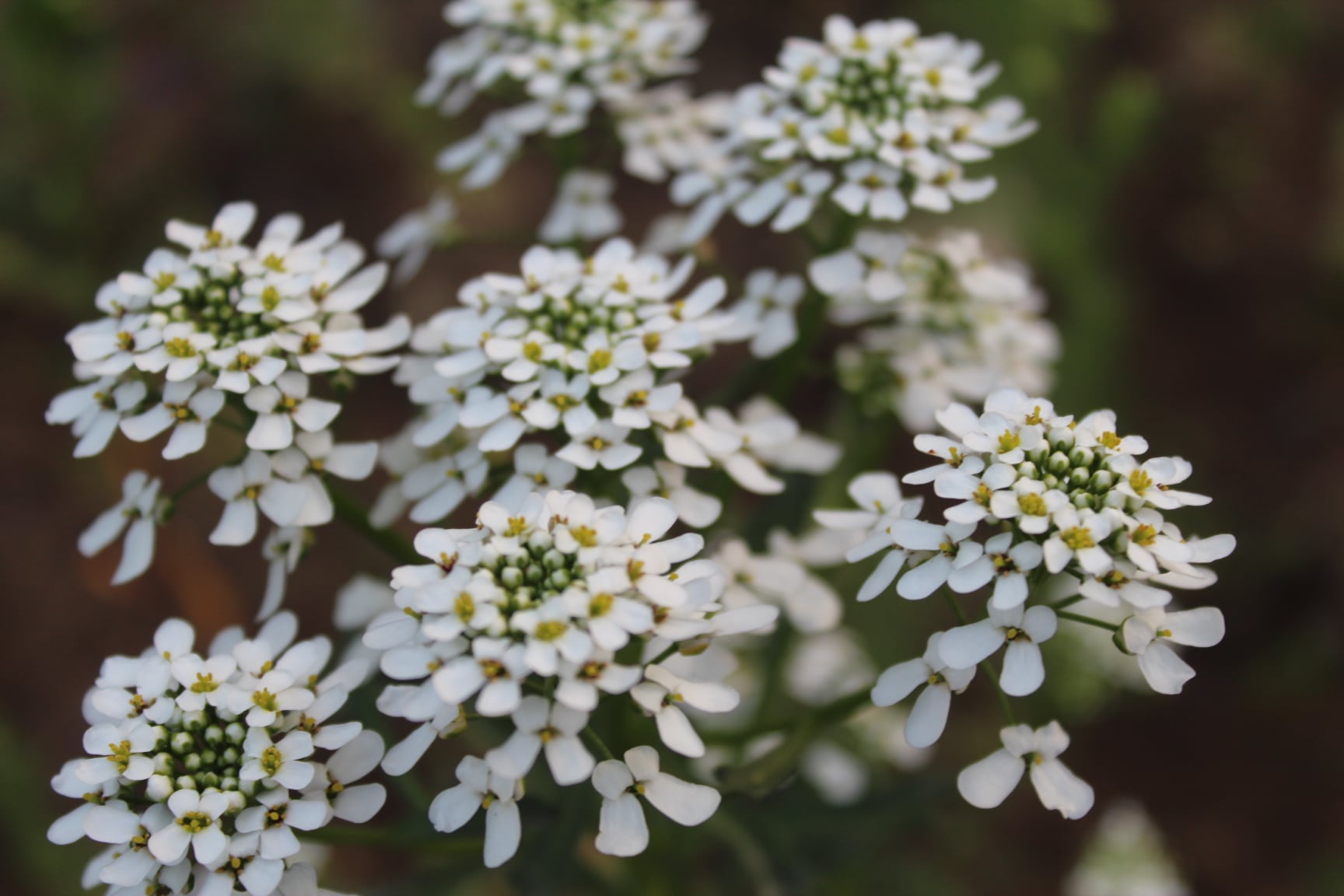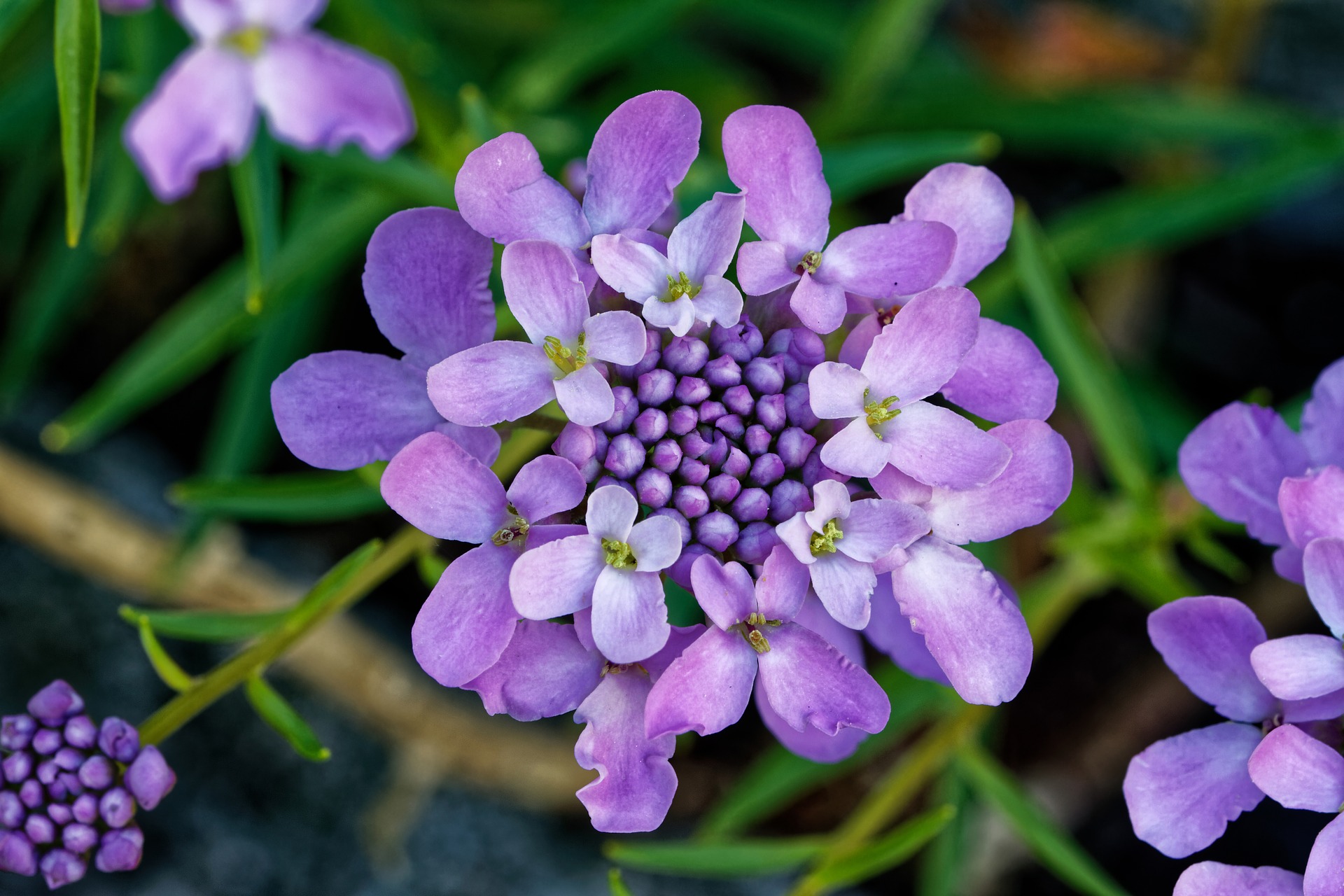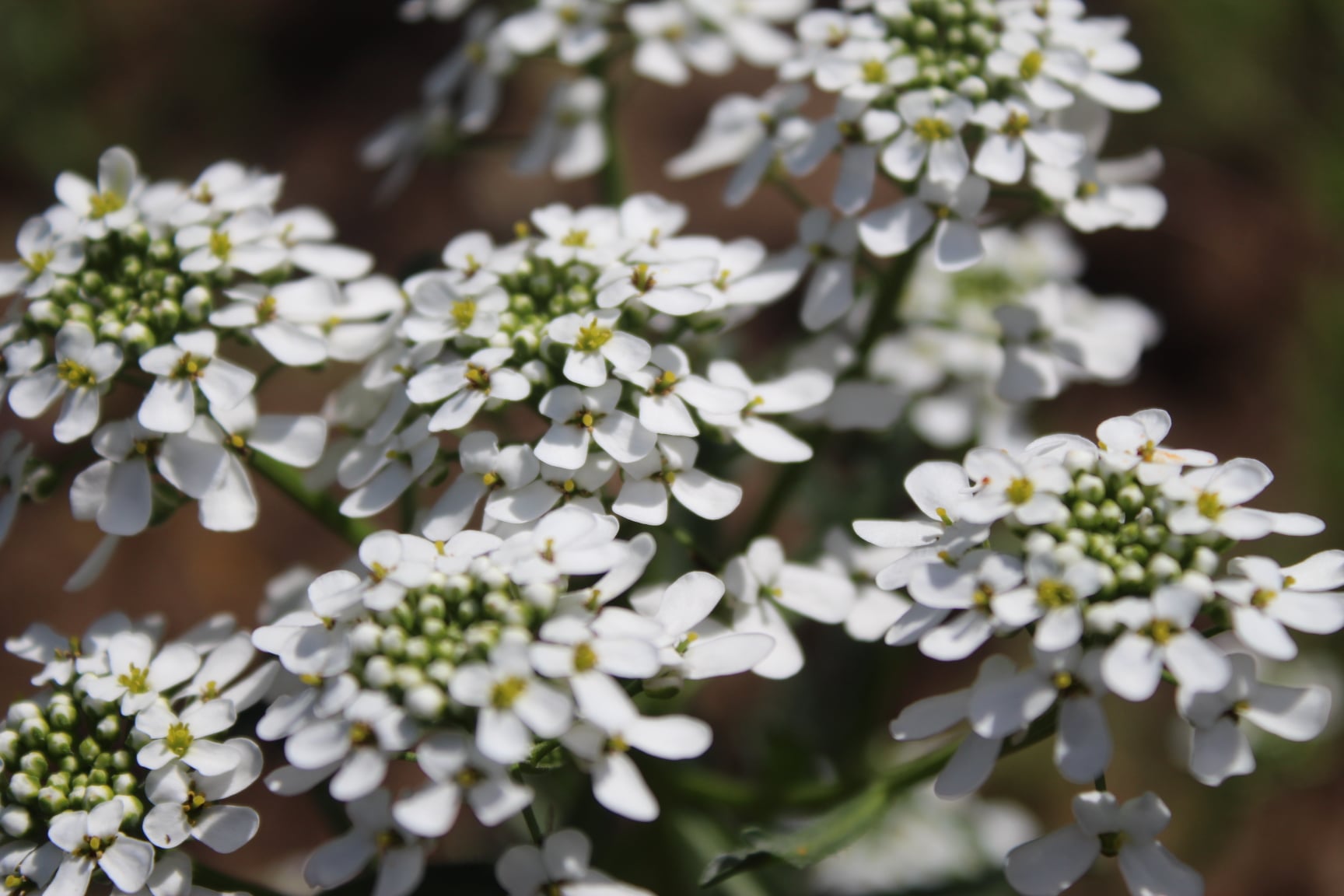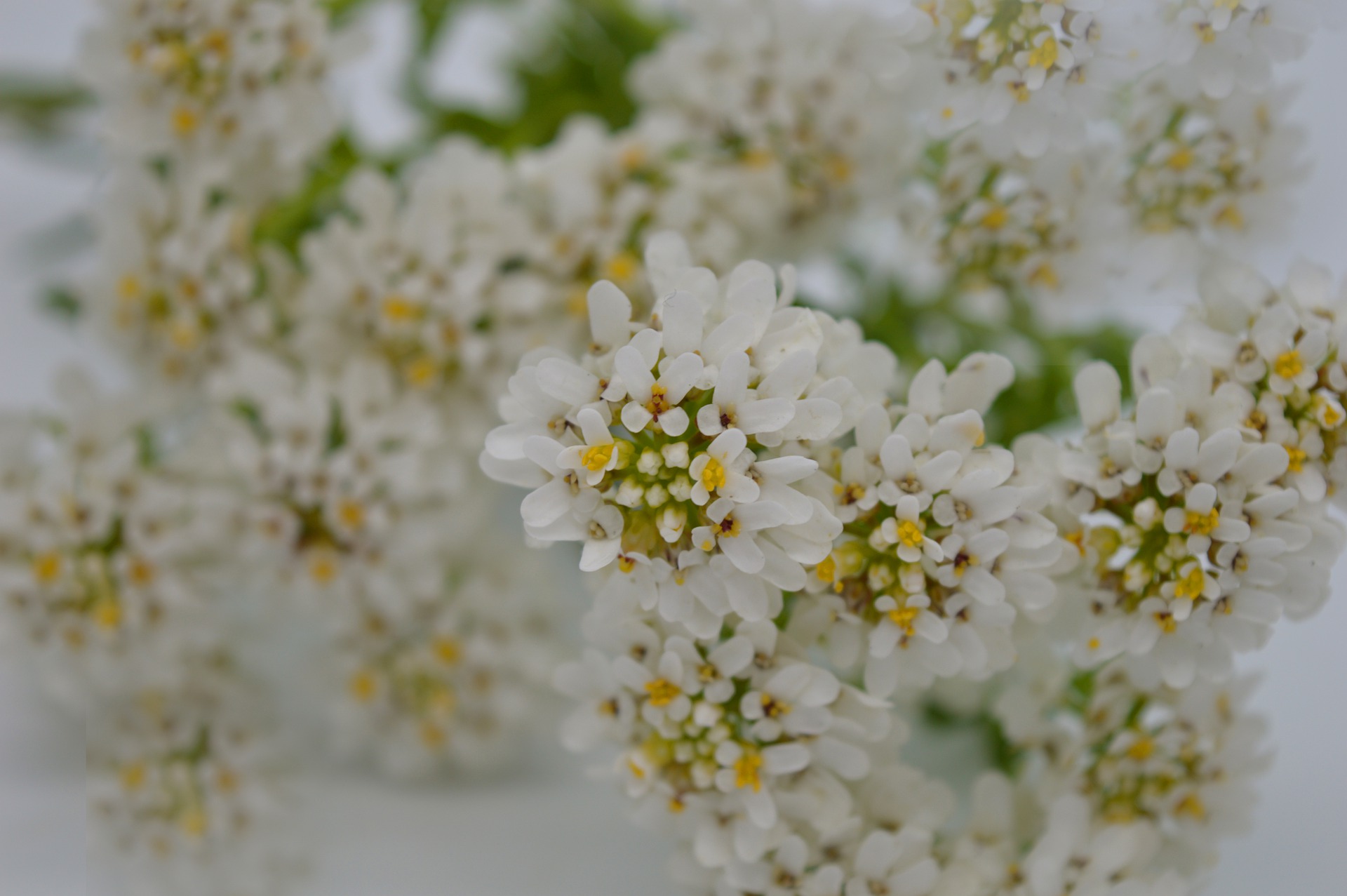Iberis, commonly known as Candytuft, is a genus of flowering plants belonging to the family Brassicaceae. It is a ground-hugging evergreen plant, generally perennial or annual flowers. This little plant is an early spring bloomer that brightens the garden in April or May with it’s white, purple, and pink flowers. The colour of blossoms looks exceptional with the backdrop of dark green leaves. These are grown as ornamentals for their fancy flowers. Its small, compact growth and tolerance of poor soil, makes it popular in rock gardens. The petals form a pretty pattern that never fails to hold your attention if you are willing to take a good, close-up look.

- Common Name – Candytuft
- Botanical Name – Iberis Sempervirens
- Plant Type – Both Annual & Perennial
- Plant Size – 5-15 inches tall, spreads 8-18 inches
- Bloom Time In North India – Feb – March, May-July
- Flower Colour – White, Pink, Liliac, Purple, Red
- Species – Around 40 Species
- Scent – Highly Fragrant
How to grow Candytuft ?
Candytuft plants are very easy to grow. For a beginner gardener and people with poor garden soils, this is an easy and fast-growing plant. Early Nov best time to plant Candytuft, however, they can also be planted in Feb. Candytuft Plants can be grown either by seeds or by propagating. Let’s go through both.
Growing from Seeds
Candytufts can be grown from seed. They can be directly seeded into your flower garden, or seeded indoors for transplanting later. The seeds should be covered lightly with ⅛” of fine soil. Direct sowing seeds outdoors should be done (Oct-Nov Or Feb in North India).
Propagating
If propagating from cutting, select a green, healthy stem that is a bit long or tall. While the stem will self-root, it does take a while. Be patient if you use this method.


Candytuft Care
Candytuft Plants are easy to care for. Let’s discuss some factors in detail so that your plants grow well and bloom fully to make your garden look pleasing.
Light
Candytufts grow and bloom at their best when planted in full sun.They should be placed in full sun where it gets greater than 6 hours of direct light. However, they can tolerate some shade. All in all, they prefer full to partial sun but will tolerate partial shade but get leggy with too much shade.
Soil
Candytufts are native to southern Europe, including areas along the Mediterranean coast; they prefer the kind of gravelly soil found in their land of origin. They prefer moist to slightly dry conditions but do not tolerate excessive moisture so avoid heavy clay soil or low areas that collect a lot of water.Candytufts love alkaline soils. Acidic soil may need amendments such as lime to produce the candytuft plant. These plants can grow well in poor soil but the soil should be enriched with organic matter to enhance drainage.


Water
Candytufts require low to moderate watering. Excessive watering might cause your plant to die. Once established, candytuft flowers are moderately drought-tolerant, but make sure to water young plants, particularly during dry periods
Fertilizer
Fertilizing candytuft is not necessary but doing so can help ensure abundant blooms. A slow-release fertilizer will help candytuft promote flowering if applied in early spring. Choose a low-nitrogen, high-phosphorus mix for best results.
Pruning
Pruning will spawn new, fresh growth. Pruning of Candytuft can be done after its first bloom period in the spring. You can cut plants back by as much as half to stimulate new growth and encourage them to bloom again.
Insect & Disease
Fortunately, the candytuft plant is mostly pest- and disease-free. However, a few insect and disease problems might occur sometimes. If insect or disease problems occur, treat early with organic or chemical insect repellents and fungicide. Also,root rot can be an issue if they are planted in boggy soil.
Uses of Candytuft
Candytufts can be used for different purpose be it adding beauty to your garen or in medicines:
● Candytufts are low growing plants and can be used at home in rock gardens, flowerbeds, xeriscaping, making borders and in making a good ground cover.
● They can also be grown at home in containers too. Candytuft flowers look lovely spilling over a wall or draping from a hanging basket.
● It’s also used in homeopathy for nervousness and muscle soreness.
● Plant seeds are considered very useful in the treatment of asthma, bronchitis, and dropsy.
● Beyond the beauty of flowers, both the leaves and flowers of candytuft can be eaten raw.


Now that you know all about how to grow, care and many uses of the candytuft plant, give it a prominent space in your garden this summer and enjoy its beauty!

I blog quite often and I seriously appreciate your information. Your article has truly peaked my interest. I will book mark your website and keep checking for new information about once a week. I opted in for your Feed as well.
Hi there everyone, it’s my first visit at this web site, and paragraph is truly fruitful in support of me, keep up posting these posts.|
Using visuals in your message was ideal for comprehending intricate principles swiftly.
Hi, I do think this is a great web site. I stumbledupon it 😉 I will revisit yet again since i have bookmarked it. Money and freedom is the best way to change, may you be rich and continue to guide other people.
Amazingness will certainly alter your life for the better.